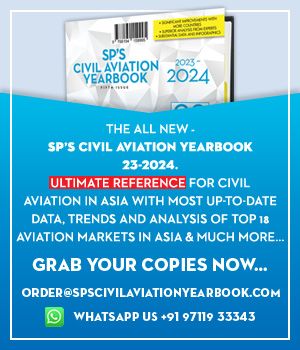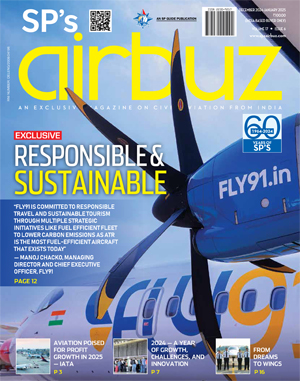Navigating the Skies of Training
Selecting the correct training aircraft is crucial in commercial pilot training, both for the flight school and the student
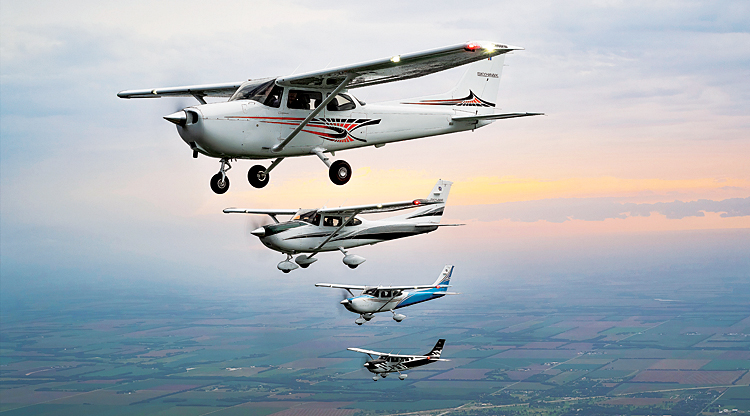
Selecting the right training aircraft is crucial in commercial pilot training, both for the flight school and the student. For flight schools, choosing the right aircraft ensures that the training process is effective, cost-efficient, and aligns with industry standards. Performance and affordability must be considered together, as the aircraft chosen should not only offer reliable performance but also have low operating costs. This ensures that flight schools can manage their expenses effectively, allowing them to invest in other critical resources, such as experienced instructors and updated training materials, while still providing top-notch instruction. Durability is also a key aspect, as training aircraft must withstand the demands of frequent use, ensuring consistent availability for students. Equally important is the integration of modern safety standards and technological advancements. Training aircraft with contemporary avionics and systems enable students to learn in an environment that mirrors real-world aviation, preparing them for the complexities of commercial flying. This investment in technology not only enhances the quality of training but also ensures that students develop the skills required for advanced aircraft and complex flight operations.
For students, the right aircraft encourages the development of core flying skills in a supportive environment, setting them on the path to becoming skilled, professional pilots. The choice of training aircraft directly impacts their learning as it fosters confidence, proficiency, and a smoother learning experience. Aircraft that are forgiving in their handling characteristics make it easier for students to develop foundational flying skills, such as control coordination and navigation. Additionally, the aircraft should be easy to maintain, ensuring that training sessions remain uninterrupted. A comfortable and well-maintained aircraft also boosts the student’s confidence, allowing them to focus on learning rather than dealing with operational difficulties. Given here are the most popular training aircraft being used by Commercial Pilot Training Institutes across the globe.
DIAMOND AIRCRAFT
Diamond Aircraft has established itself as a pivotal player in the realm of commercial pilot training, recognised for its integration of cutting-edge technology, fuel economy, and robust safety features. Its reputation for producing adaptable and dependable training aircraft has made it a preferred choice for flight schools worldwide.
One of the key factors contributing to the widespread adoption of Diamond Aircraft for pilot training is its exemplary safety record. Constructed from advanced composite materials, these aircraft are designed for enhanced durability and crashworthiness. The inclusion of modern Garmin G1000 avionics ensures that students gain hands-on experience with equipment similar to what they will encounter in contemporary airline operations. Furthermore, the use of fuel-efficient Austro and Lycoming engines helps reduce operational costs, a significant advantage for aviation training centres.
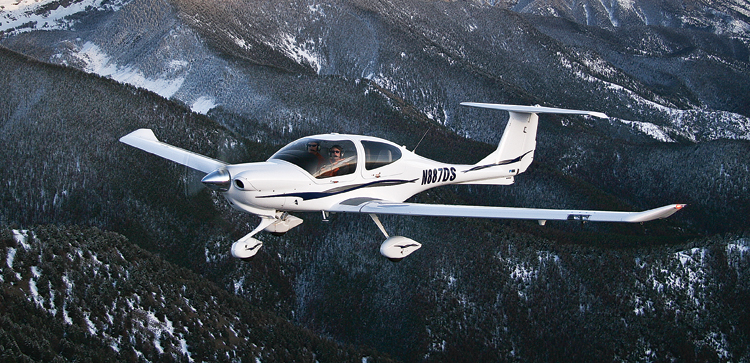
The Diamond DA40, a single-engine trainer, is highly regarded for its user-friendly handling and strong performance characteristics. Its glass cockpit and optional autopilot functions offer students practical preparation for real-world aviation scenarios. Similarly, the twin-engine DA42 is a popular option for multiengine training, while the newer DA62 combines advanced performance capabilities with cutting-edge avionics, often reserved for more specialised training purposes.
Numerous prominent flight training institutions around the globe have incorporated Diamond Aircraft into their operations, citing their dependability and innovative features as essential for developing skilled pilots. These organisations frequently emphasise the value of the aircraft’s safety, technology, and cost-effectiveness in shaping the next generation of aviators.
In summary, Diamond Aircraft’s commitment to safety, technological advancement, and operational efficiency continues to reinforce its status as a leading choice for pilot training on an international scale.
CESSNA AIRCRAFT
Cessna aircraft are widely recognised as a benchmark in commercial pilot training, celebrated for their dependability, user-friendly handling, and versatility. These aircraft have long been a cornerstone of aviation education, offering designs that effectively prepare aspiring aviators for professional careers in the industry.
Known for their predictable flight behaviour, strong safety features, and cost-effective operation, Cessna planes are particularly well-suited for training environments. Their high-wing design provides excellent visibility, a critical factor for flight instruction, while their reliable performance supports a steady and progressive learning experience for student pilots.
Among these, the Cessna 172 (Skyhawk) is a standout model, often referred to as the “gold standard” of flight training. With its efficient engine, advanced cockpit technology, and spacious cabin, this aircraft is ideal for extended instructional sessions. Simpler models like the Cessna 152 are favoured for their affordability in basic flight lessons, while more sophisticated aircraft, such as the Cessna 182 (Skylane), cater to advanced training needs like instrument flying and long-distance navigation.
Prominent aviation training institutions around the world rely heavily on Cessna aircraft, recognising their unparalleled role in preparing future pilots. These institutions consistently choose Cessna models to deliver comprehensive, high-quality training, reinforcing the brand’s esteemed status within the industry.
Cessna’s reputation for safety, adaptability, and reliability firmly positions it as a leading choice in commercial pilot education, ensuring its continued influence in shaping the aviation sector.
PIPER AIRCRAFT
Piper Aircraft has established itself as a key player in the aviation sector, known for crafting reliable, adaptable, and budget-friendly aircraft that are widely used in pilot training. The company’s aircraft are prized for their durable construction, user-friendly handling, and cutting-edge safety features, making them a top choice among flight training organisations globally.
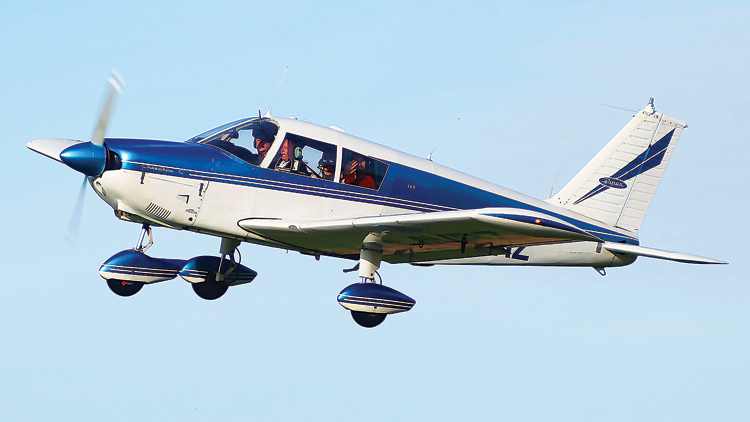
The Piper PA-28 Cherokee series, which includes both the Archer and Warrior models, is a hallmark of flight training. These single-engine aircraft are powered by the trusted Lycoming engines and feature simple avionics, making them well-suited for beginner pilots. Their forgiving flight characteristics further enhance their appeal for those just starting their flying careers. Another widely-used model, the Piper Seminole, is a twin-engine aircraft designed for multi-engine training. With its steady performance and built-in safety redundancies, it provides an excellent platform for training pilots advancing to higher certifications.
What distinguishes Piper aircraft is their emphasis on ease of use and cost-effectiveness. Built with durable airframes and having relatively low operational costs, these aircraft offer a perfect balance of reliability and affordability, meeting the needs of flight schools. Furthermore, their incorporation of modern avionics, such as the Garmin G1000 system, helps prepare trainees to move smoothly into larger, more technologically sophisticated aircraft.
Durability is key in training aircraft, as they must withstand the demands of frequent use, ensuring consistent availability for students
Numerous renowned flight schools around the world integrate Piper aircraft into their fleets, recognising their proven reputation for safety and consistent training quality. The widespread adoption of these models speaks to their ability to deliver top-tier pilot education, ensuring that the next generation of aviators is well-equipped to take on the skies.
Through its commitment to quality and innovation, Piper Aircraft continues to be a cornerstone of commercial pilot training, playing a vital role in shaping the future of aviation.
PILATUS AIRCRAFT
Pilatus Aircraft, a respected Swiss manufacturer, has firmly established its reputation in aviation with a range of high-performance aircraft, particularly in the pilot training sector. The Pilatus PC-12 and PC-21 are widely regarded as top choices among flight training organisations globally, owing to their exceptional versatility, advanced features, and reliable performance.
Renowned for their robust construction and state-of-the-art avionics, Pilatus aircraft are ideal for training aspiring pilots. The PC-12, for example, offers a distinctive combination of simplicity and sophistication. Its single-engine turboprop design provides a cost-efficient platform for training while maintaining high performance and safety standards. On the other hand, the PC-21, a military-grade training aircraft, mimics jet-like performance while being economically efficient, allowing trainees to develop advanced skills relevant to a wide range of aviation fields.
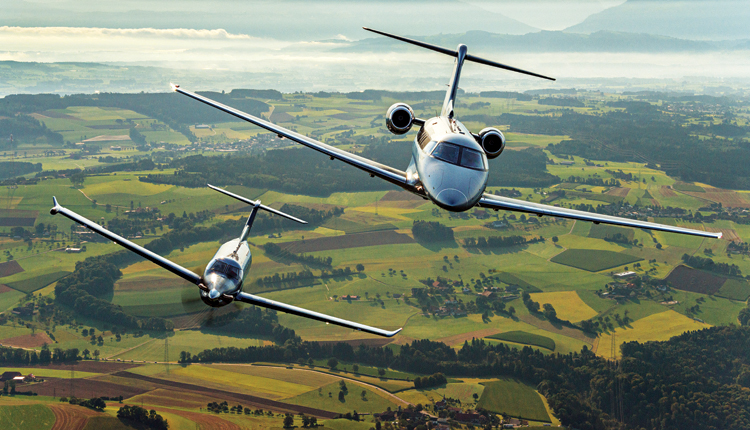
The Pilatus PC-12 is often associated with commercial pilot training, offering multi-engine experience in a single-engine configuration. Its spacious interior and cutting-edge avionics make it a perfect choice for instrument and advanced flight training. The PC-21, also known as the “Advanced Trainer,” is highly valued by military and commercial training organisations for its ability to prepare pilots for jet operations.
Numerous leading flight schools and training institutions have integrated Pilatus aircraft into their fleets, appreciating their operational efficiency, versatility, and ability to replicate real-world flying conditions. This ensures that trainees are fully prepared for careers in aviation.
Through their innovation and reliability, Pilatus aircraft continue to set the standard in pilot training, proving their lasting appeal and significance in the industry.
CIRRUS AIRCRAFT
Cirrus Aircraft has firmly established itself as a preferred option for commercial pilot training across the globe, largely due to its advanced technology, superior safety features, and user-friendly design. Combining innovation with practicality, Cirrus models provide a distinctive training experience that equips aspiring pilots to handle real-world aviation challenges effectively.
One of the standout features of Cirrus aircraft is the inclusion of the Cirrus Airframe Parachute System (CAPS), a groundbreaking safety mechanism that boosts trainee confidence and ensures higher levels of operational safety. Additionally, the aircraft are equipped with a glass cockpit that incorporates sophisticated avionics systems, such as Garmin Perspective+ or Avidyne Entegra. These advanced instruments closely resemble those used in modern airliners, offering trainees valuable early exposure to the systems they will encounter throughout their professional flying careers. Furthermore, the ergonomic design of Cirrus aircraft ensures that students can concentrate on their training without experiencing unnecessary physical discomfort.
For flight schools, choosing the right aircraft ensures that the training process is effective, cost-efficient, and aligns with industry standards
The SR20 and SR22 models from Cirrus are widely used in flight training. The SR20, known for its efficient fuel economy and dependable performance, is perfect for beginners learning the fundamentals of flying, while the SR22, featuring enhanced performance and sophisticated avionics, caters to intermediate and advanced training. Both aircraft come equipped with sidestick controls, providing superior handling precision and offering trainees a distinct advantage in their learning process.
Several prominent flight training institutions, both in the United States and internationally, have integrated Cirrus aircraft into their training fleets. These organisations appreciate the aircraft’s modern design, excellent safety features, and versatility, which together ensure a comprehensive and effective training experience for future pilots.
Cirrus aircraft continue to set a high standard in pilot training. Their advanced safety features, cutting-edge technology, and overall adaptability make them a key choice for shaping the next generation of aviation professionals.
CHOOSE THE CORRECT AIRCRAFT
Selecting the right aircraft for commercial pilot training is a decision that carries significant weight, balancing multiple factors to ensure the success of both the flight school and the student. Ultimately, the right training aircraft contributes to the broader goals of a flight school, ensuring a sustainable, high-quality training programme that equips the next generation of aviators with the knowledge, experience, and tools they need to succeed in their careers.




